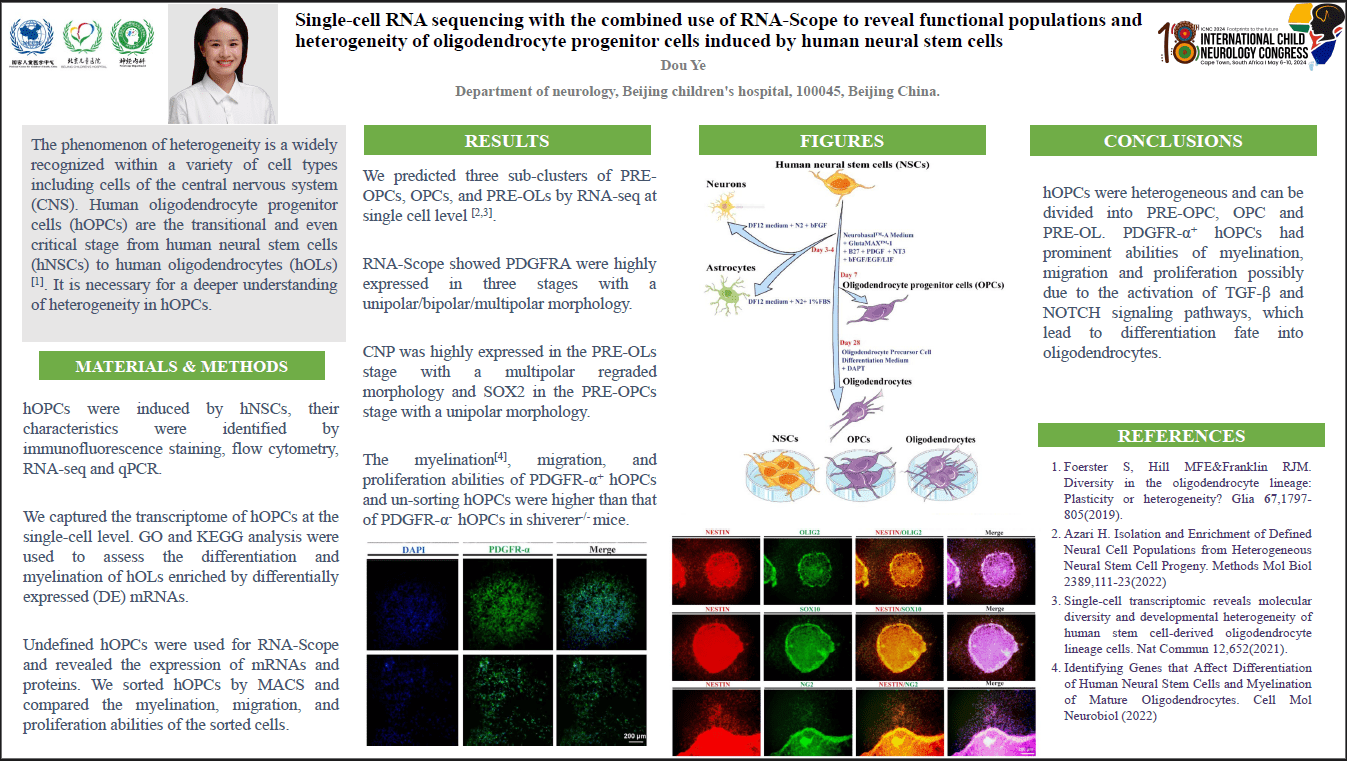ScRNA-seq- With The Combined Use Of RNA-Scope To Reveal Functional Populations And Heterogeneity Of hOPCs
Abstract Background The phenomenon of heterogeneity is a widely recognized within a variety of cell types including cells of the central nervous system (CNS). Human oligodendrocyte progenitor cells (hOPCs) are the transitional and even critical stage from human neural stem cells (hNSCs) to human oligodendrocytes (hOLs). It is necessary for a deeper understanding of heterogeneity in hOPCs. Methods hOPCs were induced by hNSCs, their characteristics were identified by immunofluorescence staining, flow cytometry, RNA-seq and qPCR. We captured the transcriptome of hOPCs at the single-cell level. GO and KEGG analysis were used to assess the differentiation and myelination of hOLs enriched by differentially expressed (DE) mRNAs. Undefined hOPCs were used for RNA-Scope and revealed the expression of mRNAs and proteins. We sorted hOPCs by MACS and compared the myelination, migration, and proliferation abilities of the sorted cells. Results We predicted three sub-clusters of PRE-OPCs, OPCs, and PRE-OLs by RNA-seq. RNA-Scope showed PDGFRA were highly expressed in three stages with a unipolar/bipolar/multipolar morphology. CNP was highly expressed in the PRE-OLs stage with a multipolar regraded morphology and SOX2 in the PRE-OPCs stage with a unipolar morphology. The myelination, migration, and proliferation abilities of PDGFR-α+ hOPCs and un-sorting hOPCs were higher than that of PDGFR-α- hOPCs in shiverer-/- mice. Conclusions hOPCs were heterogeneous and can be divided into PRE-OPC, OPC and PRE-OL. PDGFR-α+ hOPCs had prominent abilities of myelination, migration and proliferation possibly due to the activation of TGF-β and NOTCH signaling pathways, which lead to differentiation fate into oligodendrocytes.
Dou Ye
Beijing children's hospital
China
